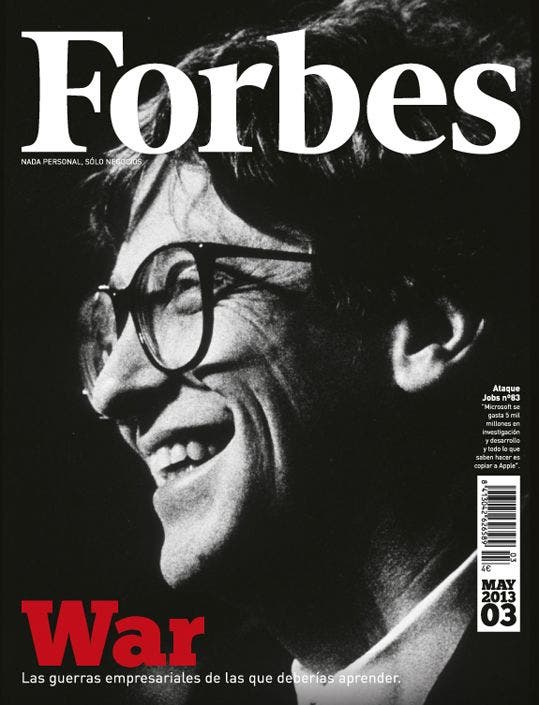
As socioeconomic inequality rises, the rift between average Americans and the so-called “one-percenters” will only widen — and our society can only suffer as a result. Things haven’t been made any easier by the pandemic, which has exacerbated inequality greatly. While most people have experienced financial strain, American billionaires saw their wealth surge by $1.8 trillion during the pandemic. This obscene discrepancy is fueling a great deal of resentment at the societal level. If left to simmer for too long, the delicate fabric of an open, democratic society may be torn apart.
But while people tend to see billionaires as a group in a negative light, we tend to be much more lenient when judging individual billionaires like Oprah Winfrey, Bill Gates, or Elon Musk despite the overall impression that it is unfair for a very small fraction of the population to control so much wealth.
That’s the conclusion of a new study out today in the Proceedings of the National Academy of Sciences, which may have important implications for the kind of economic policies we choose to support, such as taxing the ultra-rich and other wealth redistribution measures.
Jesse Walker, assistant professor of marketing at The Ohio State University, along with Thomas Gilovich and Stephanie Tepper, both from Cornell University, conducted eight studies that tease out this paradox of inequality and explain why people may have opposing views in their attitudes towards billionaires.
“We had done some earlier work showing that people prefer runs of success by individuals to continue more than identical runs by groups. It had occurred to me that this work may have broader application in terms of how people think about accelerating wealth in society. If people prefer runs of success by people like Usain Bolt or Roger Federer to continue more than runs of success by the Yankees or the Patriots, then perhaps people would also be more tolerant of accelerating wealth and inequality when thinking about the wealth of someone like Warren Buffet rather than that of the investor class as a whole. And that was exactly what we found,” Walker told ZME Science.
In one such study, 201 volunteers were presented with information about how much CEOs are making relative to the average employee. One group of participants read an article that mentions the salaries of the CEOs of the largest 350 companies in the U.S. went from 48 times the average worker’s wage in 1995 to 372 times their wage today. Another group read about Avnet, a specific top 350 company, whose CEO, Robert Eisen, made 372 times the amount of money as the average employee, up from 48 times the average wage in 1995. The article mentions that Eisen’s contribution was supposedly paramount to the growth of the company.
Although the two scenarios are identical, numbers-wise, the reactions they generated were even opposing at times. Those who read Avnet’s story tended to be more supportive of the CEO having an even higher salary-to-average-wage ratio than those who heard about the whole group of CEOs.
In another study, the study participants were shown two distinct fake Forbes magazine covers. One group saw a cover highlighting the wealthiest people in the world, but which did not include the faces of very famous billionaires such as Bill Gates or Oprah in order to eliminate any potential biases. The other group saw a cover with only one of the seven obscure billionaires.
The participants first read a description about the billionaire or group of billionaires featured on the cover, and were then asked to write a few words about how they felt about the individual or group of individuals. They also rated how deserving they thought the people featured on the cover were of their riches.
Participants who commented on individual billionaires were less angry than those who criticized billionaires as a group. They were also more likely to hold the view that the cover photo billionaire was successful mainly due to their hard work and talent.
“People in our study were clearly more upset by the wealth of the seven individuals pictured on a single cover than they were by any one of them pictured alone,” Walker said.
“I wouldn’t say that people necessarily thought well of the individual billionaires in each study, but it was clear that when people thought about an individual at the top of the ladder rather than a group, they were far more tolerant of excessive wealth and inequality and were less open to the idea of reducing wealth disparities,” he added.
In another study, the researchers assessed the participants’ sentiments towards wealth redistribution policies after viewing the two different types of magazine covers. Those who saw the billionaires grouped together on the cover were more likely to support a wealth inheritance tax than those who saw one billionaire on the cover.
The takeaway is that our perceptions may be heavily influenced by how the ultra-wealthy are framed, either as a group or as individuals. It’s a distinction that may prove important when communicating policies that aim to bridge the gap between rich and poor — a gap that desperately needs to be bridged somehow.
The effects of income inequality are far-reaching, including higher rates of health and social problems, higher crime, lower population-wide satisfaction and education levels, and weaker social bonds between people. If left unchecked, rampant income inequality can hurt the long-term GDP growth rate even in prosperous economies such as the United States and may trigger revolutions that slide a democratic nation into the hands of authoritarianism.
“We’re examining whether this same pattern is also present when people think about the bottom of the distribution. Are people more or less tolerant of inequality when thinking about an individual or a group at the bottom of the economic ladder? This question seemed like a natural next step to investigate,” Walker said.






